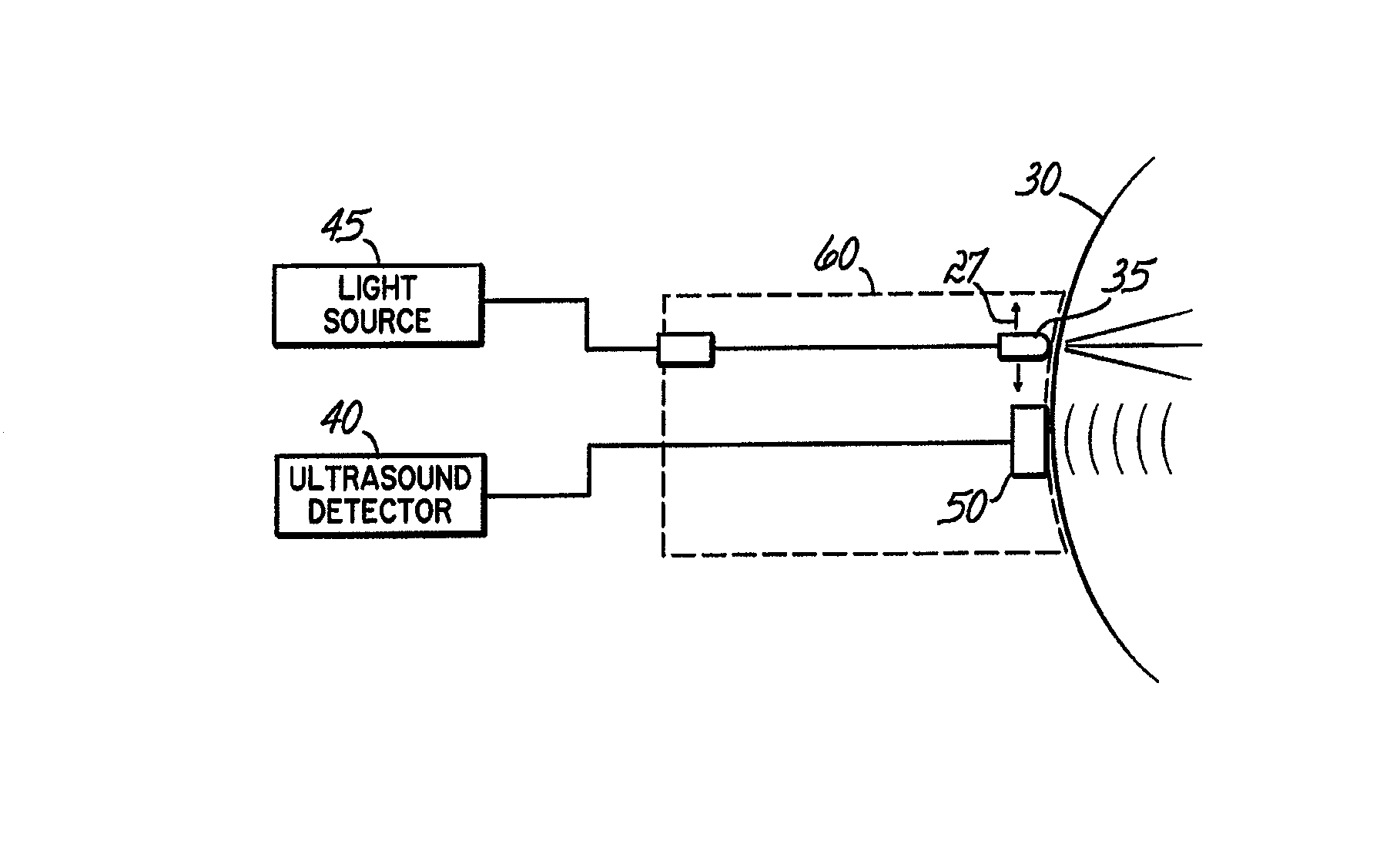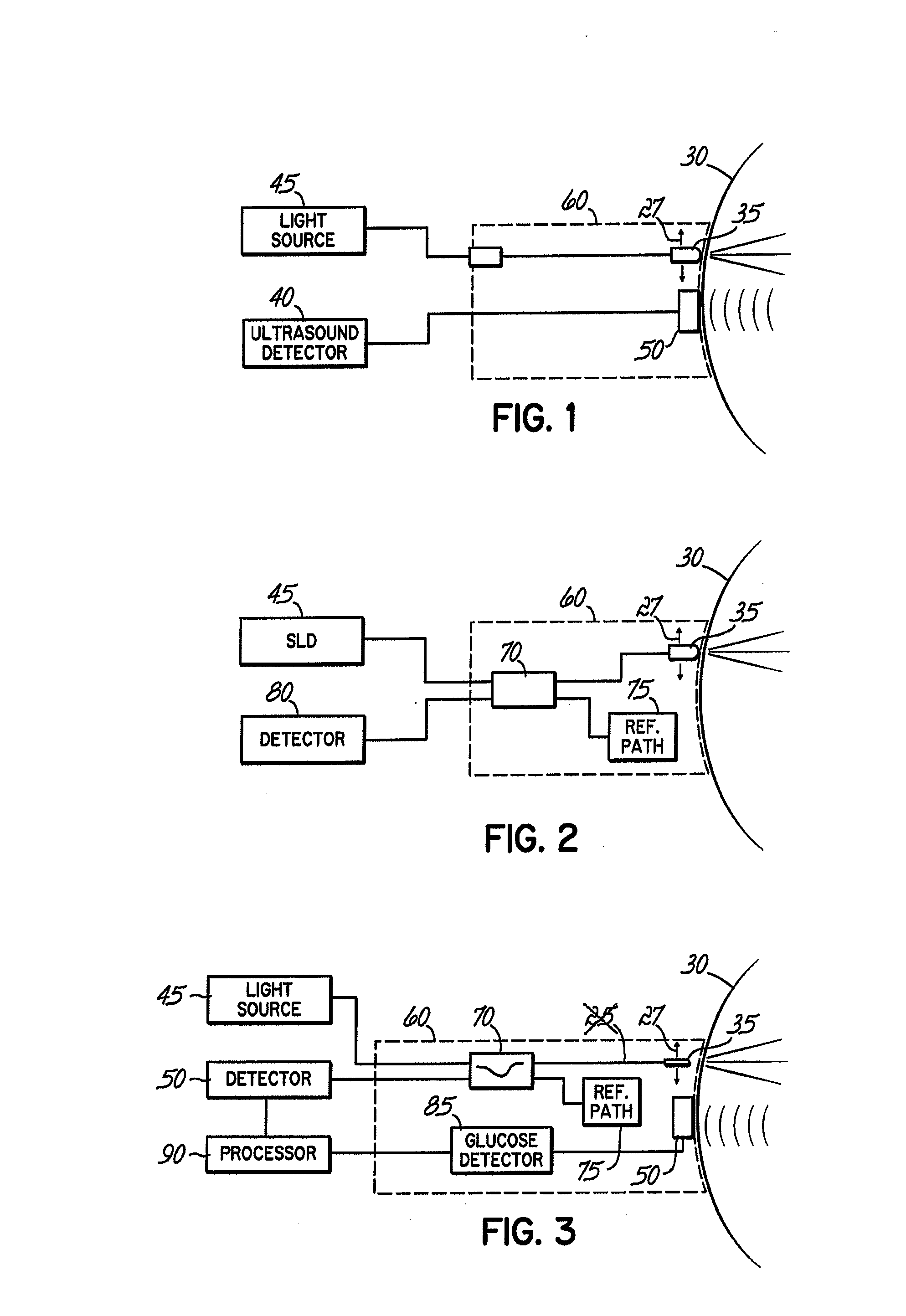Photoacoustic Measurement of Analyte Concentration in The Eye
a technology of analyte concentration and photoacoustic measurement, which is applied in the field of noninvasive in vivo, can solve the problems of inaccurate location and size of the absorbing tissue region, affecting the measurement of blood glucose levels, and all approaches suffer from a number of drawbacks
- Summary
- Abstract
- Description
- Claims
- Application Information
AI Technical Summary
Benefits of technology
Problems solved by technology
Method used
Image
Examples
Embodiment Construction
[0024] In one embodiment of the inventive system, the glucose concentration is measured in the eye, by a photoacoustic assay such as that described in U.S. Pat. No. 6,846,288 (e.g. at Col. 13, line 62 to Col. 18, line 49) or in U.S. Pat. No. 6,403,904, each of which is incorporated by reference in their entirety.
[0025] As shown in FIG. 1, the probe module 60 includes an objective lens structure 35, which is coupled to a light source 45 via a fiber optic connection or other light transmitter. Light source 45 provides light at a wavelength which is preferentially absorbed by glucose. Alternatively, the light source may be incorporated into the probe module 60.
[0026] The light source 45 may be a laser, laser diode or superluminescent diode (SLD), as appropriate for generating the desired light wavelength and intensity. The light may be delivered as pulses or as modulated radiation,
[0027] The probe module 60 further contains an ultrasound transducer 50 to detect the photoacoustic wav...
PUM
 Login to View More
Login to View More Abstract
Description
Claims
Application Information
 Login to View More
Login to View More - R&D
- Intellectual Property
- Life Sciences
- Materials
- Tech Scout
- Unparalleled Data Quality
- Higher Quality Content
- 60% Fewer Hallucinations
Browse by: Latest US Patents, China's latest patents, Technical Efficacy Thesaurus, Application Domain, Technology Topic, Popular Technical Reports.
© 2025 PatSnap. All rights reserved.Legal|Privacy policy|Modern Slavery Act Transparency Statement|Sitemap|About US| Contact US: help@patsnap.com


